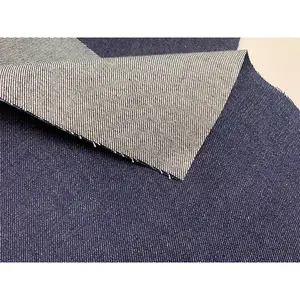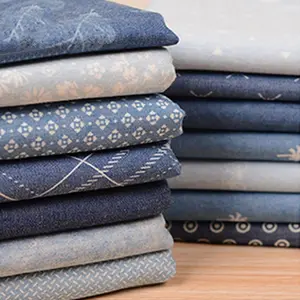Exploring Thin Jeans Fabric Varieties
The world of thin jeans fabric is diverse and rich, offering a plethora of options for manufacturers and fashion enthusiasts alike. This fabric category is a specialized segment within the denim industry, known for its lightweight and comfortable properties. Thin jeans fabric is particularly sought after for its adaptability to various styles and climates, making it a versatile choice for apparel.
Understanding the Fabric's Composition
Thin denim fabric is primarily woven from cotton, which provides breathability and softness. However, modern variations may include a blend of synthetic fibers, such as polyester or elastane, to introduce stretch and enhance durability. The composition of the fabric plays a crucial role in its texture and performance, with some types offering a more rigid structure, while others provide significant flexibility.
Types and Applications of Thin Denim
The application of lightweight denim fabric extends beyond traditional jeans. It is an excellent material for crafting a range of garments, including jackets, skirts, and dresses. Within the jeans category, it manifests in several forms, such as slim-fit jeans, straight-leg designs, and even maternity wear, catering to a broad audience. The fabric's thinness does not compromise its durability, making it suitable for daily wear.
Features and Advantages of Thin Jeans Material
One of the key features of stretch denim fabric is its elasticity, which provides wearers with enhanced comfort and freedom of movement. This feature is particularly beneficial in slim-fit and body-hugging designs. Additionally, the lightweight nature of thin jeans fabric makes it an ideal choice for warmer seasons or climates, as it helps to keep the wearer cool.
Choosing the Right Thin Jeans Fabric
Selecting the appropriate thin jeans fabric requires consideration of the garment's intended use and the desired comfort level. For instance, bull denim, known for its heavier weight, may be less suitable for those seeking the lightest fabric available. Conversely, those in search of a fabric that offers a slight stretch for active wear might opt for a blend that includes a small percentage of elastane.
Environmental Impact and Sustainability
The production of lightweight denim fabric has evolved to embrace more sustainable practices, with many suppliers offering options that minimize water usage and incorporate organic cotton. This shift not only reflects a commitment to environmental responsibility but also caters to a growing consumer base that values sustainability in their clothing choices.





































 浙公网安备 33010002000092号
浙公网安备 33010002000092号 浙B2-20120091-4
浙B2-20120091-4